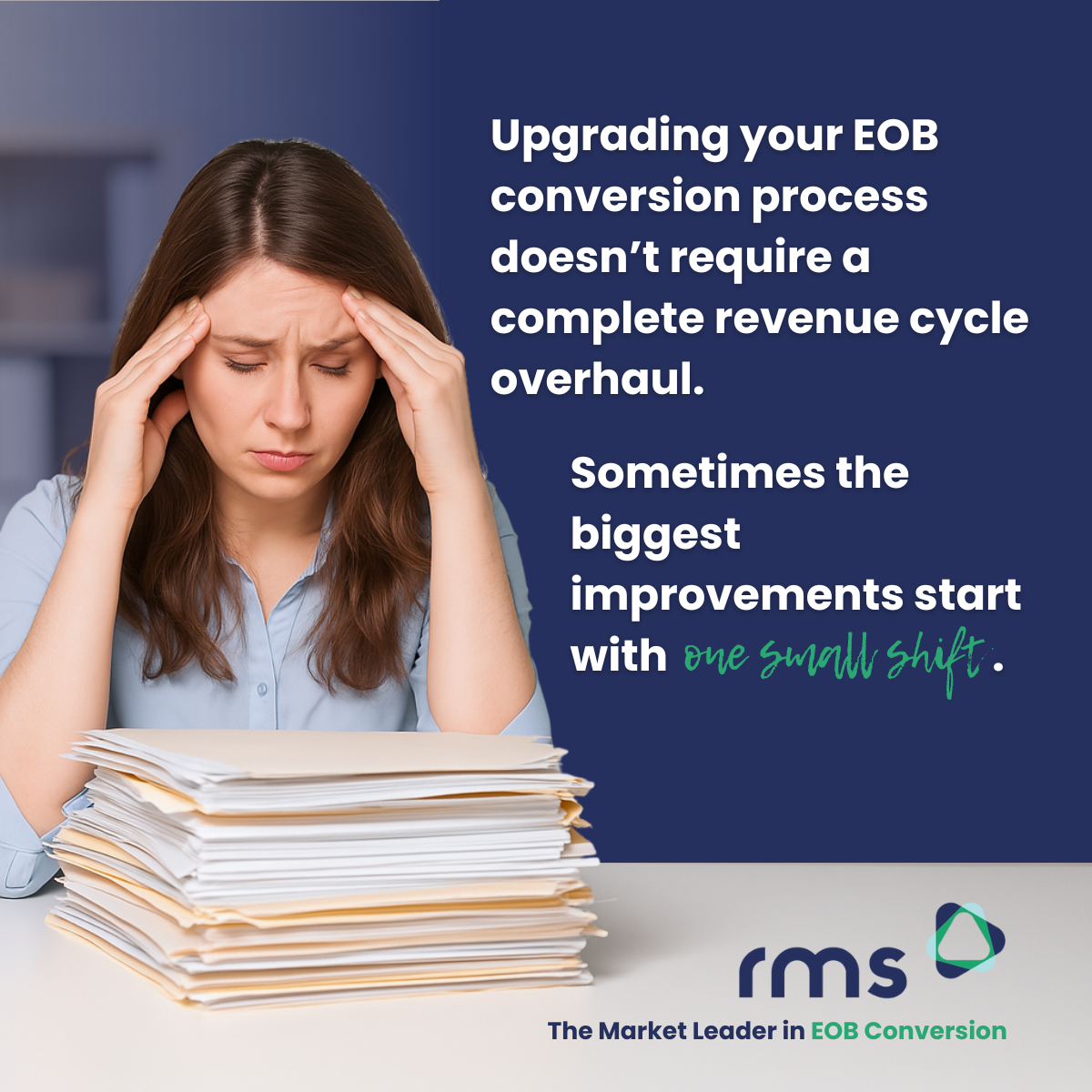5 Signs It's Time to Upgrade Your EOB Conversion Process
If your hospital or health system is still relying on manual or heavily fragmented workflows to manage explanation of benefits (EOBs), it's likely impacting your efficiency, your staff, and your revenue cycle. For revenue cycle leaders, the pressure to streamline operations, protect PHI, and accelerate cash flow is only increasing. In a complex environment like this, your EOB conversion process can either quietly support your goals or quietly work against them. Here are five signs it might be time to consider an upgrade.
1. You're Still Doing Most of the Reconciliation Manually
Even if you’re no longer typing every EOB line into your patient accounting system, manual work might still be weighing your team down. If your staff is spending significant time reconciling payment data before it can be posted, it may be time to explore a solution that takes more of that lift off their plate. A clean, matched file ready for posting isn’t just a convenience; it’s a productivity unlock.
2. You Receive Scanned PDFs That Are Hard to Work With
Many providers receive large, consolidated PDFs from their lockbox or payment partners. These files often include multiple patient payments and scanned images of EOBs, making it difficult to extract and organize the data for posting. If your current process requires someone to manually split, identify, and match those remits, or if your existing tools struggle with this type of file, there’s a more efficient path forward.
3. You're Experiencing Posting Delays During High Volumes
Seasonal surges, month-end backlogs, or increased payment volume shouldn’t derail your posting process. If your team is regularly behind, working overtime, or delaying follow-up tasks because payment reconciliation takes too long, your process may not be scalable. A modern EOB conversion approach helps you stay on pace (even during peak times) without adding headcount.
4. You're Spending Too Much Time Handling Exceptions
Even the best systems occasionally encounter files they can’t fully automate, but how those exceptions are handled makes all the difference. If your staff has to pause their workflow to investigate discrepancies, match remits manually, or chase down missing data, the exception process becomes a bottleneck. With advanced EOB conversion technology, you can expect exceptions to be rare and resolved down to the penny. That means your team can stay focused while still maintaining complete accuracy.
5. Security and Compliance Are on Your Radar
With cyberattacks on the rise and PHI regulations tightening, secure handling of remits and EOBs is more important than ever. If you're receiving files via email, relying on manual downloads, or using offshore resources without clear oversight, it may be time to evaluate alternatives. Many providers are moving toward onshore processing and secure file transfer protocols to bring greater confidence to IT and compliance teams.

Upgrading your EOB conversion process doesn’t require a complete revenue cycle overhaul. Sometimes the biggest improvements start with one small shift. If you're looking to reduce posting time, minimize manual work, and improve your cash flow, a better EOB strategy could be the right next step.
Want to learn how RMS can help? Reach us here: https://rmsweb.com/contact